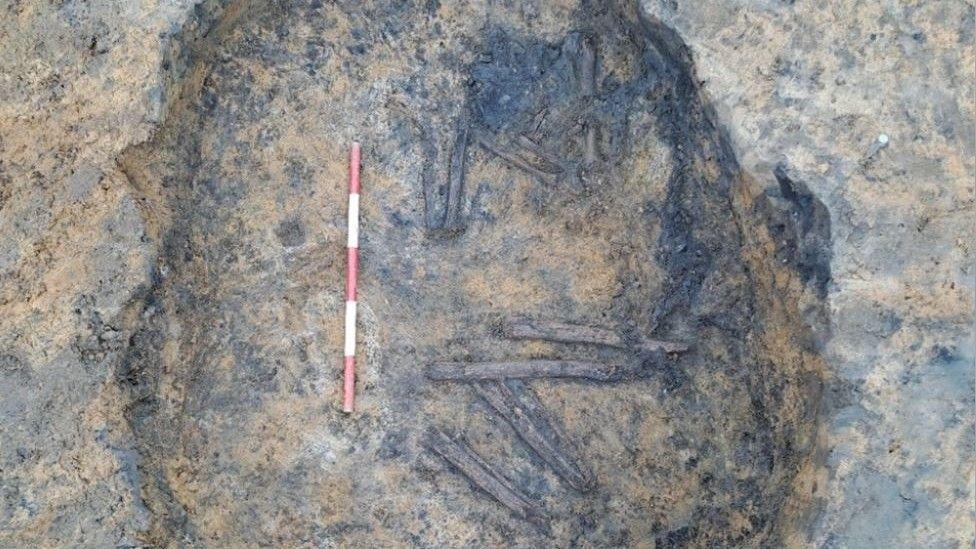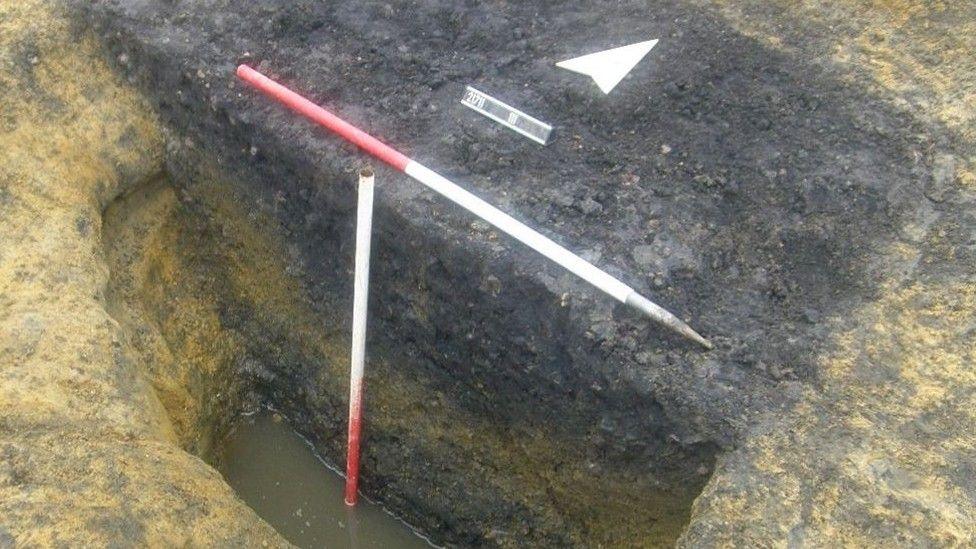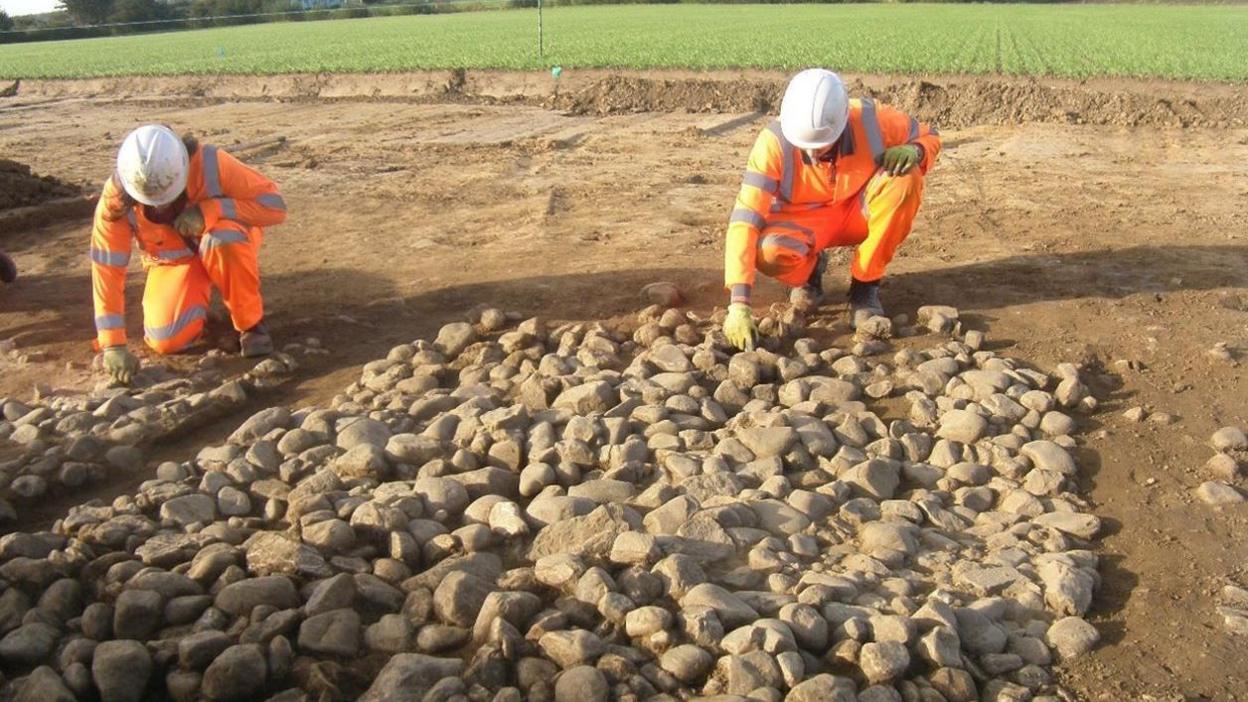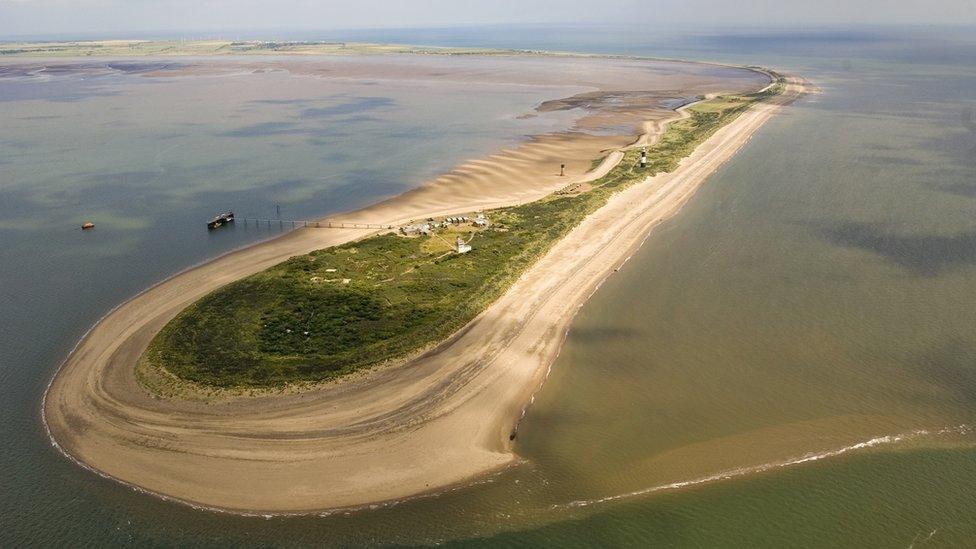Prehistoric human remains found in East Yorkshire

The buried individual appeared to have been placed in the pit in a foetal or crouched position
- Published
A burial monument with human remains thought to be about 4,500 years old has been discovered in East Yorkshire.
Parts of a Roman road and a burnt mound were also discovered during a £5m project to build a 5.2km (3.2 miles) sewer near Full Sutton.
Ecus Archaelogy, working on the site for Yorkshire Water, said the three sites give a glimpse into the prehistoric and early historic past of the area.
The analysis stage of the project is yet to start and the sewer is now being laid.

The Neolithic or Bronze Age well could provide "important clues" into the history of the local environment
The small circular burial monument was discovered in the vicinity of Full Sutton with the human remains being "surprisingly well-preserved" despite later ploughing, Yorkshire Water said.
The human remains depicted a buried individual placed in the pit in either a foetal or crouched position.
With the grave back-filled with burnt stone and charcoal from the adjacent mound, the bones had survived.
The monument is estimated to be either from a Later Neolithic or Bronze Age date and was covered by a dome-shaped mound of earth or stone.

The Roman Road was discovered closer to Stamford Bridge
Remnants of the burnt mound included a small earth oven and a deep pit that appeared to have been a well.
Part of the wooden lining of the well was preserved by waterlogging as well as the lower fills which archaeologists took soil samples from.
Yorkshire Water said this could provide "valuable and rare data" into what the site was used for and possible preserved remains of plants and insects.
The Roman Road was uncovered closer to Stamford Bridge and was flanked by drainage ditches.
Yorkshire Water said the alignment suggested it would have led to the remains of the Roman town of Derventio in Reckondales.
Adam Ellis, project manager at Yorkshire Water, said it had been a "fascinating project".
He said: “The archaeology work prior to us starting the new sewer in the area is something we do on projects considered areas of archaeological interest and it was great to see some of the findings from site.
“Our project is now underway and the sewer currently being laid will provide services for the new prison.”
Follow BBC East Yorkshire and Lincolnshire on Facebook, external, X (formerly Twitter), external and Instagram, external. Send your story ideas to yorkslincs.news@bbc.co.uk, external.
Related topics
Related stories
- Published24 March 2024
